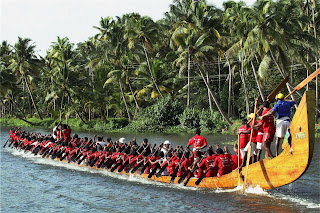WELCOME TO TOURISM AT KERALA
Kerala tourism provides one of the biggest opportunities to come close to the nature in Kerala.Kerala Tourism promotes beach tourism, Ayurveda tourism, wildlife tourism, hill station tourism etc. Kerala is one of the most popular destinations because of its rich culture and traditions. Kerala is known as one of the ten paradises in the world. Kerala with hills, beaches, backwaters, houseboats is like a heaven on earth.Kerala tourism makes the person close to the culture of the region. Through the tourism, you will come to know more about the dance forms, spice tourism, tea and coffee plantation tourism etc.
Kerala tourism provides one of the biggest opportunities to come close to the nature in Kerala.Kerala Tourism promotes beach tourism, Ayurveda tourism, wildlife tourism, hill station tourism etc. Kerala is one of the most popular destinations because of its rich culture and traditions. Kerala is known as one of the ten paradises in the world. Kerala with hills, beaches, backwaters, houseboats is like a heaven on earth.Kerala tourism makes the person close to the culture of the region. Through the tourism, you will come to know more about the dance forms, spice tourism, tea and coffee plantation tourism etc.
Kerala Information
Kerala is located at the south west in the India Arabian sea in the
west, Tamil Naidu on the east and Karnataka in the north and north east. Kerala
is spread to the area of 38, 863 sq. km. The capital of the Kerala is
Thiruvananthapuram or Trivandrum and Kochi
Kerala is famous for the dance forms which are combination of music, theater and tradition stories. Some of the famous folk dances are Kathakali and Mohiniyattam and folk arts are Theyyam, Mudiyettu etc. The ragas and Talas and carnatic music is the specialty in the Kerala music. Music is considered as the integral part of everyday life. The music is different on the occasion of marriage and childbirth. Kerala also has a great literature history. Kerala is a centre for literature, prose, play and poetry. Kerala also celebrates its festival with cheer and joy. There are many festivals which are celebrated, but some of the key festivals are Onam, Vishu, Navratri, maha Shivratri, Christmas, Easter, Bakrid, Eid – ul – fitr, Muharram etc.
How to reach:
By Air:Thiruvananthapuram ,
Cochin and Calicut
By Road:Kerala major cities are well through road with many transport facilities. It is well connected with the Kerala State Road Transport Corporation to major and minor states inIndia
By Railway: Kerala is well connected with the major states. Kerala hasThriuvananthapuram , Cochin , Shonur and Kozhikode as the major stations and
Konkan rail line with the Mumbai and North
West
Kerala is famous for the dance forms which are combination of music, theater and tradition stories. Some of the famous folk dances are Kathakali and Mohiniyattam and folk arts are Theyyam, Mudiyettu etc. The ragas and Talas and carnatic music is the specialty in the Kerala music. Music is considered as the integral part of everyday life. The music is different on the occasion of marriage and childbirth. Kerala also has a great literature history. Kerala is a centre for literature, prose, play and poetry. Kerala also celebrates its festival with cheer and joy. There are many festivals which are celebrated, but some of the key festivals are Onam, Vishu, Navratri, maha Shivratri, Christmas, Easter, Bakrid, Eid – ul – fitr, Muharram etc.
How to reach:
By Air:
By Road:Kerala major cities are well through road with many transport facilities. It is well connected with the Kerala State Road Transport Corporation to major and minor states in
By Railway: Kerala is well connected with the major states. Kerala has












